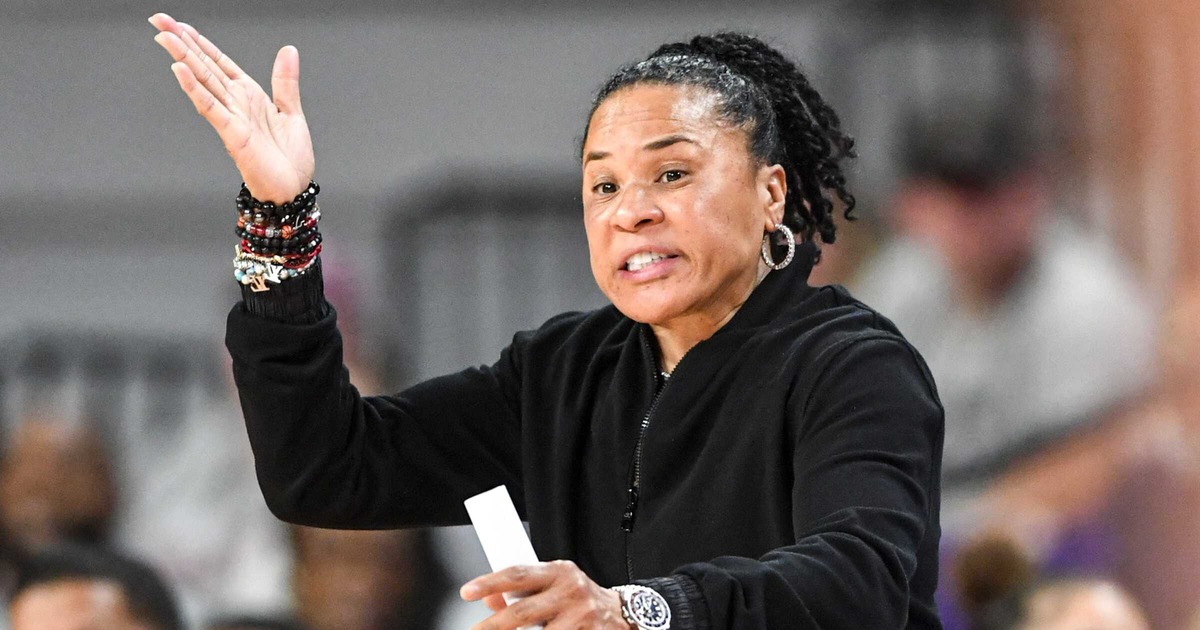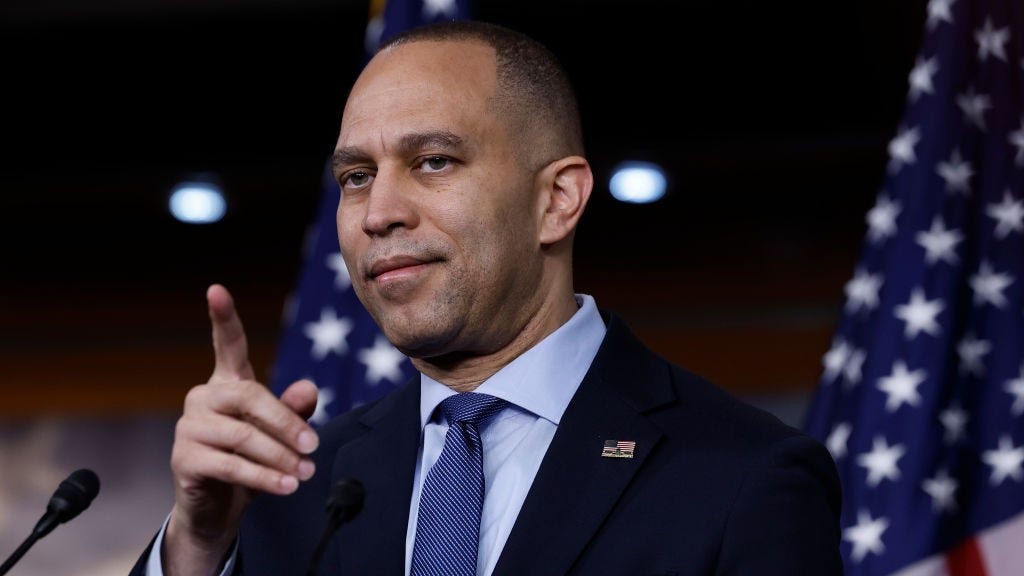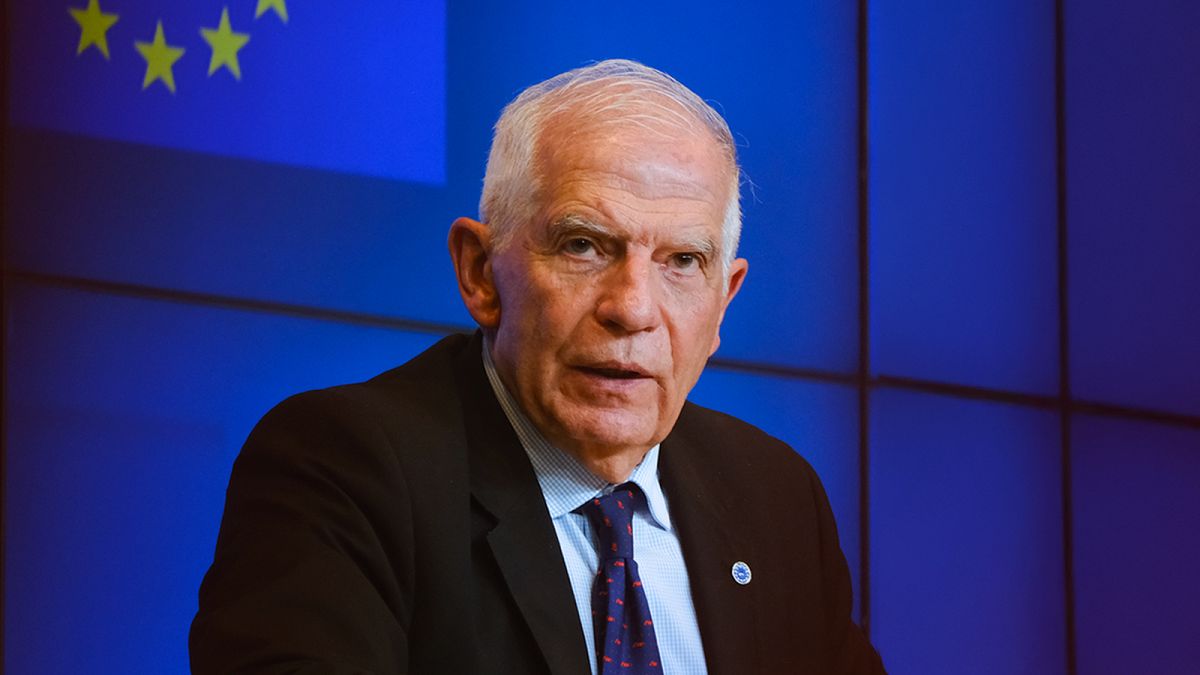South-Carolina
5 Women In South Carolina’s State Senate Are Saving Abortion Rights (For Now)

They call themselves “Sister Senators” and together, crossing party lines, they’re the only obstacle stopping the male-dominated South Carolina legislature from passing an abortion ban.
The five women include three Republicans who identify as pro-life, plus a Democrat and an independent who lean pro-choice. Together, they share a common belief that banning abortion is not about saving unborn lives, it’s about controlling women.
“If you don’t believe me, just look up personhood,” Republican state Sen. Sandy Senn told The Daily Beast. “They (the GOP legislature) want to end abortion and get to zero exceptions, and then they want to attack birth control.” Senn said in a recent debate over the issue that a Republican colleague declared “the only proper birth control is a condom, everything else is sinful.” If that isn’t about control, Senn asks, what is?
The five female senators are the only women in the 51-seat senate chamber, and their unity has held through eight months of contentious debate, countless hours of filibustering, and three failed attempts by their male colleagues in the Republican super-majority to push through a near total abortion ban. The male legislators have the votes for a six-week ban, which is before most women realize they’re pregnant, but they wanted an even more extreme ban, which is when they ran into the buzzsaw of the five women.
“I’m the only Republican who did not support a six-week ban,” Senn says. “I lost that argument.” She favors a 12-week ban, but recognizes that politics is the art of the possible, and together with the other women amended the proposed six-week ban to include important exceptions, such as allowing doctors to proceed with emergency care when a woman’s life or health is threatened without first requiring an ultrasound to check for a fetal heartbeat.
The bill would also repeal a 1974 law that makes seeking an abortion a criminal act.
“We’ve told the House they can’t change a colon or a semicolon, and they gave us 14 pages of amendments,” Senn says. “So now we are back to another upcoming filibuster and our fourth time addressing abortion this year. Meanwhile we have failed so far to pass much needed bills such as one dealing with fentanyl trafficking and many more.”
This tiny cohort of women are blocking the worst of the worst legislation denying women access to abortion.
“Did you know that with us five women here in the state senate, that there are millions—literally millions—of people here in South Carolina depending on the five of us to make sure this bill is just so?” Republican Sen. Penny Gustafson said in describing the challenge before them.
Complicating matters, the state Supreme Court in January ruled unconstitutional an earlier six-week abortion ban, hastily passed last year after Roe was overturned in 2022. However, the deciding vote on the Court, a woman, retired. The legislature replaced her with a man, boosting the likelihood that a new 6-week ban could survive the court test.
South Carolina is the only state where legislators elect judges, and the mostly male GOP supermajority rallied around the only male in contention, rejecting two qualified female judges, to make the state’s highest court the only all-male Supreme Court in the nation.
Tyler Jones is a Democratic political consultant in South Carolina, and he told The Daily Beast that the ongoing battle over abortion is the result of the Republican Party not having a clear strategy on the issue.
“After Roe, they became the official party of the dog that caught the car,” he says. “What the legislature is doing, they’re trying to give the Court another chance. The six-week ban is their insurance policy if they can’t get the full ban passed (no abortion after conception).”
“This is Plan C,” Jones continues, to have the Court uphold the bill not because the bill has changed, the Court has changed.”
The Republican women have been the target of anti-abortion protestors, who last month distributed plastic spines from “the pre-born” urging the women to stand with their party. “I’ve got one hell of a spine already, but now I’ve got another backup,” Sen. Katrina Shealy said as she stood alongside the two other Republicans—Sens. Senn and Gustafson—all proudly holding aloft their plastic spines.
“It’s good what they’re doing, but it’s hard to give them too much credit here,” says Jones, pointing out that except for Sen. Senn, the two other Republican women voted for the six-week abortion ban. “One of the most draconian laws in the history of our country,” he called it, adding, “Okay, you’re not total fascists, but you could do better.”
That’s the issue—could they do better?
Abortion is currently legal at 22 weeks in South Carolina, a law that is unlikely to survive much longer. Women have found their voice in the senate, but they are a distinct minority in a body that ranks 47th in the nation in female representation and is determined to end abortion. The Sister Senators have added exceptions for rape and incest, but a six-week abortion ban doesn’t allow much leeway for real life getting in the way.
“We the women have not asked for, nor do we want, your protection,” Sen. Senn said, directing her gaze at her male colleagues on the floor, as she soldiered through yet another filibuster last month.
“We don’t need it. We don’t buy into the ruse that what you really want is to take care of us,” said the Republican senator from deep-red South Carolina.

South-Carolina
Staff Picks: South Carolina at Clemson, other Week 14 rivalry matchups

The wait is almost over. At long last, rivalry weekend is upon us.
In what will be one of the biggest games of the weekend, No. 15 South Carolina will travel to the upstate to face No. 12 Clemson for the Palmetto Bowl. Kickoff is at noon on ESPN on Saturday.
The GamecockCentral and 107.5 The Game staffs shared their predictions for the game between the Gamecocks and Tigers as well as other Week 14 matchups from around the country.
[GamecockCentral: Subscribe for $1 for 7 days]
George Bagwell: I think this is a bad matchup for Clemson. They’re not working with a great offensive line while they face an elite defensive front. They just gave up 288 rushing yards to The Citadel, the most against a Clemson defense since Georgia in 2014, and now they’re facing a highly efficient run-based offense in South Carolina. South Carolina 38, Clemson 20.
Peyton Butt: This could honestly go either way so making a prediction was a challenge. Clemson has struggled with some injuries thus far but the two are pretty evenly matched. I think the game being at Clemson will be a huge advantage and boost for the Tigers. Gamecock defense will have to put pressure on Cade Klubnik fast but I think Klubnik’s accuracy and consistency will be a problem for the Gamecocks. Clemson 45, South Carolina 28.
Elijah Campbell: It’s one of the most highly anticipated games in the history of this great rivalry and for the first time since I was in high school, I really feel like this Gamecocks team will go into Clemson and win. Shane Beamer said that forcing turnovers is a must and I agree. I also see the Kennard and Stewart edge rushing combo working perfectly to force one of the key turnovers as well as keeping Clemson’s rushing attack at bay. Give me the Gamecocks in a thriller! South Carolina 21, Clemson 17.
Chris Clark: I think this South Carolina team is battle-tested and will have an advantage at the line of scrimmage on defense. I expect a competitive game, but I’m taking the Gamecocks to get it done on the road. South Carolina 27, Clemson 20.
Terry Ford: USC wins a tight one on the road. The way the Gamecocks offense has come on to go along with one of the best defenses in America make Carolina tough to beat. Plus, USC has been real good on the road all year. Stat to file away…ESPN SP+ Special Teams Rankings Nationally: Gamecocks 42nd…Tigers 109th. South Carolina 23, Clemson 20.
Griffin Goodwyn: Recent history would say that the Gamecocks are expected to struggle when they head to Memorial Stadium on Saturday. South Carolina has lost three of its last four road matchups against Clemson, and those three defeats were by a combined 88 points. But the Gamecocks’ last trip to the Tigers’ home stadium was a different story, as they claimed a 31-30 victory facing long odds as an unranked team looking to take down a top-10 squad with College Football Playoff aspirations. The postseason stakes are higher for both teams in this year’s Palmetto Bowl, and so is the possibility of an upset. South Carolina is in the midst of a five-game win streak — and is in prime position for a sixth-straight victory. South Carolina 28, Clemson 27.
[On3 App: Get South Carolina push notifications from GamecockCentral]
Tyler Head: High stakes game. Gamecocks have to slow down the Tigers rushing attack. I think Sellers has another star making performance. South Carolina 34, Clemson 31.
Wes Mitchell: South Carolina’s defensive line has carried it all season long and I don’t think that will stop this week, especially against a Clemson offensive line that has been banged up. The key will be can the Gamecocks protect the football, not let the moment be too big, and just do what they do otherwise. South Carolina 31, Clemson 21.
Jay Philips: Here we are, a Carolina/Clemson game that really matters for both teams beyond the daily rivalry. The Gamecocks are playing some of the best football in the country and will feel no fear in traveling to Memorial Stadium this weekend. Based on their form I think Carolina is the slightly better team, and if they continue on their current path they should win this game. In a tense contest give me South Carolina 30, Clemson 23.
Kendall Smith: I could write a long paragraph about why I am going with this final score, but all I’m going to say is I think this game belongs to the Gamecocks if they play to their potential. South Carolina 27, Clemson 23.
Mike Uva: Two teams with strong defenses who have QBs who have improved throughout the year. This should be an instant classic, especially with the college football playoff hopes hovering both these teams. South Carolina 20, Clemson 17.
Jack Veltri: I’ve said it since the summer that South Carolina would beat Clemson this year, and that was before any of us knew the Gamecocks would be where they are today. I still feel they’re going to get the job done. They’ve faced all kinds of adversity this season and handled it well. The key here will be to take care of the football on offense and the defense creates takeaways. South Carolina 34, Clemson 28.
[Get our free newsletter! Don’t rely on search engines and social media for your Gamecock info.]
Chris Wellbaum: Which quarterback do you trust against which defense? Both teams will try to lean on their run game, and the defense that can force some turnovers will win the game. Clemson 31, South Carolina 16.
Kevin Miller: In one of the most anticipated matchups in recent rivalry history, South Carolina and Clemson are both ranked and holding on to slight hope for the College Football Playoff. The Gamecocks have played better than the Tigers in recent weeks, but the game is in the Upstate. In classic rivalry fashion, this game could come down to the football cliches: turnovers, 3rd-down conversions, and explosive plays. Give me the Gamecocks in a tight one: South Carolina 27, Clemson 24.
Tennessee at Vanderbilt
Michigan at Ohio State (The Game)
Auburn at Alabama (Iron Bowl)
Notre Dame at Southern Cal (The Battle for the Jeweled Shilleagh)
Oklahoma at LSU
Texas at Texas A&M (Lonestar Showdown)
Marshall at James Madison
Virginia at Virginia Tech (The Commonwealth Clash)
George Bagwell (63-54)
Vanderbilt
Ohio State
Alabama
Notre Dame
LSU
Texas
James Madison
Virginia Tech
Peyton Butt (63-54)
Tennessee
Ohio State
Alabama
Notre Dame
Oklahoma
Texas
James Madison
Virginia Tech
Elijah Campbell (76-41)
Tennessee
Ohio State
Alabama
Notre Dame
LSU
Texas A&M
Marshall
Virginia Tech
Chris Clark (66-51)
Vanderbilt
Ohio State
Alabama
Southern Cal
Oklahoma
Texas A&M
Marshall
Virginia Tech
Terry Ford (83-33)
Tennessee
Ohio State
Alabama
Notre Dame
LSU
Texas A&M
James Madison
Virginia
Griffin Goodwyn (81-36)
Tennessee
Ohio State
Alabama
Notre Dame
LSU
Texas
James Madison
Virginia Tech
Tyler Head (66-51)
Tennessee
Ohio State
Alabama
Notre Dame
LSU
Texas A&M
James Madison
Virginia Tech
Wes Mitchell (78-39)
Vanderbilt
Ohio State
Alabama
Notre Dame
LSU
Texas
James Madison
Virginia Tech
Jay Philips (75-42)
Tennessee
Ohio State
Alabama
Notre Dame
LSU
Texas
James Madison
Virginia Tech
Kendall Smith (68-49)
Tennessee
Ohio State
Alabama
Notre Dame
LSU
Texas
James Madison
Virginia Tech
Mike Uva (76-41)
Tennessee
Ohio State
Alabama
Notre Dame
LSU
Texas
James Madison
Virginia Tech
Jack Veltri (78-39)
Tennessee
Ohio State
Alabama
Notre Dame
LSU
Texas
Marshall
Virginia Tech
Chris Wellbaum (63-54)
Vanderbilt
Ohio State
Alabama
Notre Dame
LSU
Texas
James Madison
Virginia Tech
Kevin Miller (50-22)
Tennessee
Ohio State
Alabama
Notre Dame
LSU
Texas
James Madison
Virginia Tech
South-Carolina
College Football Picks: Expert Predictions For Texas-Texas A&M, South Carolina-Clemson, Kansas State-Iowa St.

Rivalry week is upon us, and all eyes will be on College Station, Texas, as No. 3 Texas and No. 20 Texas A&M for the first time since 2011. This one is even bigger than expected as the winner will move on to play Georgia in the SEC Championship Game. The Longhorns will likely stay in the College Football Playoff bracket if they lose, but the Aggies almost certainly are in a CFP do-or-die situation.
Kansas State and Iowa State will tee it up in Ames, and South Carolina will head upstate to take on Clemson in games that, very quietly, can still impact the CFP race.
Here are the picks from Outkick writers Trey Wallace and Barrett Sallee, who are tied in straight up and against the spread heading into the biggest weekend of the season. Keep in mind, winners against the spread in the wild card games are worth two points in our completely made-up game.
Trey: 38-14 straight up, 27-25 against the spread (29 points)
Barrett: 38-14 straight up, 27-25 against the spread (29 points)
Texas (-5.5) at Texas A&M
Wallace: Thank goodness this rivalry has returned after 13 years. I don’t know what type of wakeup call Texas A&M needed last week in Auburn, but they got it. Now, the Aggies still control their destiny, but so do the Longhorns, and I expect their offense to cause the opposing defense some problems. I think this one comes down to the fourth quarter, and Texas A&M finds a way to win this game late, something they couldn’t do last week against the Tigers.
Texas and Texas A&M will play for the first time in 13 years on Saturday (Photo by Tim Warner/Getty Images)
Sallee: Give me the Longhorns to win – and do it by double digits. I don’t care that their quarterback situation is in flux because both Quinn Ewers and Arch Manning are capable of getting the job done against an Aggies bunch that has to be down in the dumps after last week’s quadruple overtime loss at Auburn. Expect Texas’ defense to have its best performance of the season.
Kansas State at Iowa State (-2.5)
Wallace: Another wild game in the Big 12 awaits, as both teams still fight for a spot in the championship game, thanks to some wild tiebreaker rules. While this feels like a game for Avery Johnson to flourish at quarterback for Kansas State, I think Iowa State’s Rocco Becht could be the one that comes out on top. Even though the Wildcats have only given up more than 20 points just once in the last 5 games, this is the Cyclones day.
Iowa State wins, and covers.

MANHATTAN, KS – NOVEMBER 23: Quarterback Avery Johnson #2 of the Kansas State Wildcats runs to the outside against the Cincinnati Bearcats in the first half at Bill Snyder Family Football Stadium on November 23, 2024 in Manhattan, Kansas. (Photo by Peter Aiken/Getty Images)
Sallee: I’m a big Avery Johnson fan, and he will show you why in what will be a win for the Wildcats en route to the Big 12 Championship Game. He’s healthy again, which means that they will unleash a punishing rushing attack against a Cyclones defense that hasn’t fared well stopping the run.
South Carolina at Clemson (-3)
Wallace: This one should be a lot of fun. Both offenses have been playing well, but its the Gamecocks defense that continues to amaze me at times. I would argue that South Carolina is playing some of the best football in the SEC right now/ For Clemson, they are fighting for a spot in the college football playoff as well, which adds so much more fuel to this game. This one comes down to Tocket Sanders running the ball for the Gamecocks, and Clemson QB Cade Klubnik tossing a few interceptions.
I’m going with the Gamecocks to win the game.

Can Dabo Swinney lead the Clemson Tigers to the College Football Playoffs? . (Photo by John Byrum/Icon Sportswire via Getty Images)
Sallee: The Gamecocks are one of the hottest teams in the country, and still have an outside chance at making the CFP. However, it needs to win and have several dominoes fall around the country. Expect coach Shane Beamer to unleash a monster rushing attack with quarterback LaNorris Sellars and running back Rocket Sanders, and the defensive front to rattle Tigers quarterback Cade Klubnik.
Wild Card Games
Notre Dame (-7.5) at USC
Honestly, I have no idea why this is a single-digit spread. I call Notre Dame the “best, most boring team in the country” because the Fighting Irish casually go about their business bludgeoning their opponents until they say “mercy.” That will happen on Saturday against a broken Trojans team that has been a massive disappointment.

Can Alabama QB Jalen Milroe have a bounceback game against Auburn in the Iron Bowl (Photo by Brandon Sumrall/Getty Images)
Auburn @ Alabama (-11.5)
The Tigers have the momentum entering this game, but Alabama is still playing for a potential spot in the college football playoff. So, what gives on Saturday afternoon? If Auburn can follow the same defensive plan as Oklahoma, who upset Alabama last week, then maybe they can cause Jalen Milroe to give up the ball a few times. If not, and they let Jalen make plays outside the pocket, it could be a long day for Auburn.
I don’t know if I trust Payton Thorne to win this game for Auburn, but I do trust Jarquez Hunter to run the ball. I think Alabama wins, but the Tigers cover.
Alright, that will do it for this week’s picks. Email your thoughts about the weekend to Trey.Wallace@OutKick.com
South-Carolina
Dawn Staley shares how South Carolina has responded since loss

South Carolina had its run of 43 straight wins come to an end this past Sunday as Dawn Staley and the Gamecocks suffered a 77-62 loss at UCLA.
Staley said after the loss and ahead of the matchup with Iowa State on Thursday that she thought her team would respond the right way. Needless to say the Gamecocks did against Iowa State, pounding the Cyclones 76-36 on Thanksgiving Day.
“That’s what a team does. This is a resilient group,” Dawn Staley said. “This is a team that obviously hasn’t dealt with a whole lot of losing. It’ll shake you for a moment.
“We’ve got a 24-hour rule. Bask in the glory of a defeat and you handle a defeat. And you handle it with grace, but you handle it with learning lessons. Things were exposed and hopefully we can fill some of those holes and get back to happier times.”
It was certainly a happier time for South Carolina on Thursday. The Gamecocks led Iowa State 19-3 at the end of the first quarter and 35-9 at halftime.
South Carolina went on a 32-0 run at one point in the first half and easily handled an Iowa State team that was ranked No. 15 nationally.
Dawn Staley said ahead of the game that she wanted her team to play better offensively and it did. South Carolina shot 45.3 percent from the floor against Iowa State after connecting on only 36.4 percent of its attempts against UCLA.
“Our offense, just getting better looks and getting better ball movement,” Dawn Staley said of where South Carolina needed to improve. “The ball has been sticking too much to individual players and it’s stagnant.
“We need to get our bigs involved, so we’re going to look to get them involved in positions they can score, whether that’s two feet in the paint or hitting mid-range shots. If you’ve got 3-point range, you can take good, fluid, rhythm 3s.”
South Carolina relied on a balanced scoring attack against Iowa State as senior forward Sania Feagin and freshman forward Joyce Edwards led the way with 13 points each.
The Gamecocks will be back in action on Saturday when they face Purdue in Fort Meyers, Florida. Tip off is set for 11 a.m.
-

 Science1 week ago
Science1 week agoTrump nominates Dr. Oz to head Medicare and Medicaid and help take on 'illness industrial complex'
-

 Health7 days ago
Health7 days agoHoliday gatherings can lead to stress eating: Try these 5 tips to control it
-

 Science3 days ago
Science3 days agoDespite warnings from bird flu experts, it's business as usual in California dairy country
-

 Health4 days ago
Health4 days agoCheekyMD Offers Needle-Free GLP-1s | Woman's World
-

 Science1 week ago
Science1 week agoAlameda County child believed to be latest case of bird flu; source unknown
-

 Technology3 days ago
Technology3 days agoLost access? Here’s how to reclaim your Facebook account
-

 Sports1 week ago
Sports1 week agoBehind Comcast's big TV deal: a bleak picture for once mighty cable industry
-

 Entertainment2 days ago
Entertainment2 days agoReview: A tense household becomes a metaphor for Iran's divisions in 'The Seed of the Sacred Fig'



















